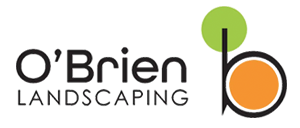Welcome to our Invasive Species Division
Our Services
See below for a range of services we offer on a nationwide basis. Due to the nature of invasive species and ongoing developments in treatment, control and eradication it is not always possible to include all services. Please call us for more information.
Consultation
If you are concerned that you may have a problem with an invasive species then the first action is to seek professional advice. We offer a consultation service whereby one of our invasive species experts will visit with you and assess the problem. Our team may provide specific guidance on work you can carry out yourself to manage the species or suggest a tailored service which we can provide.
Site surveys and reports
Sound information informs good decision making and a professional site survey is a vital component part of any treatment programme for controlling invasive species. The O’Brien’s team can provide comprehensive site survey in which we will report on the the exact nature and scope of the invasive species problem. The survey report can be used for the purposes of planning compliance and to serve as the basis for eradication/control. While surveys are best conducted as far in advance of any development as possible, the team can undertake assessments at any time and we pride ourselves on providing a rapid response.
Supervision, monitoring and control
If you are intending to undertake works in proximity to to an infestation and have have any concerns, the O’Brien’s team can provide trained staff to supervise site work. Such supervision can help to stop or reduce the spread of invasive species. It can also help to reduce overall costs, for instance, where a contractor wishes to utilse their own staff and construction equipement for excavations.
Treatment and processes
Invasive species in Ireland can be treated in a number of ways and the type of treatment used depends on the nature, scale, species and location of the problem.
For small scale infestations we can provide an effective herbicide spray treatment. Such treatment will be effective over one growing season on all species with the exception of Japanese knotweed, which may take two growing seasons.
In the case of knotweed, and in particular, where infestations are well established and located close to desirable tree species, we can provide a stem injection service. This involves injecting a specified dose of translocating herbicide directly into the stems.
Excavation and removal is a process which involves digging out the infected area to a depth of 3m and the safe removal and disposal of the spoil to a licensed landfill. This method is often employed on development sites where time is an important factor.
Excavation and encapsulation involves the excavation of infected soil to a depth of 3m and burying it onsite at a depth of 5m. The spoil is then encapsulated within a specialist membrane. This type of encapsulation is often utilsed on large commercial sites. Works are often undertaken by primary building contractors with supervisory from experts.
All herbicides and application processes are approved for use and in line with national and EU regulations. Staff are fully trained, licensed and insured.
Resources
Below is a selection of useful information, guides, identification tools, links and video to help you make informed decisions about invasive plant species problems in Ireland.
What is an invasive plant?
Invasive plants are non-native species that have been introduced by human intervention, outside their natural range and have a tendency to spread, which is believed to cause damage to the environment, human economy and health. Most non-native species do not cause any harm and only a small proportion are considered to be invasive. [expand title=”read more…”]Invasive plant species are the second greatest threat to biodiversity world-wide after habitat destruction, and they cost the Irish economy by damaging crops, property and control. Estimated costs to the European economy are €12.7 billion each year.
Invasive species of plants can be spread by wind, water, movement of soil, people and animals. Invasive species of animals may be highly mobile in their own right, be deliberately spread by people, or travel by water or soil or through goods in transit. A list of all invasive species legally designated in Ireland can be found in the European Communities (Birds and Habitats) Regulations 2011 which you can read or download from the Government website:
What if i find an invasive species on my land?
If you suspect you have an invasive species on your site either contact us and we will arrange a site visit, or use the resources on this page to make an identification and plan a treatment programme. Please be assured that most of the terrestrial non-native plants can be controlled eventually with a sustained programme of herbicide application. For large scale infestations, or in cases where you are unsure, we recommend using our trained staff. [expand title=”read more…”] Where spraying is necessary in areas adjacent to, or over, water bodies, consult with the Environment Protection Agency before attempting to undertake any control measures. If you are using a translocating herbicide, please note it will be non-selective and will kill all plants it comes in contact with. It may then take many years for the native flora to re-colonise the area and critical populations of rare plants may never recover
Japanese knotweed is regarded as ‘controlled waste’ under the Environmental Protection Act Regulations and, if not burnt, can only be disposed of in registered land-fill sites.
If you have any doubts please call use today.
What can i do to reduce the impact of invasive plant species?
Avoid using plants known to be invasive, especially in the case of non-native aquatic species
Do not distribute invasive non-native plants that may damage the wider environment to other gardeners
Take steps to prevent the escape of invasive non-native plants into the wild. [expand title=”read more…”] Destroy or dispose of invasive non-native plants in a responsible way. Do not introduce them into the wild or into areas where they may escape into the wild.
Call an expert if you have any concerns
Report sightings here
Download the and read Good Horticultural Practice in Relation to Invasive Species Report
Use these handy invasive species identification sheets
All identification sheets were prepared by The National Biodiversity Centre. The National Biodiversity Data Centre is an Initiative of the Heritage Council and is operated under a service level agreement by Compass Informatics. The data centre is funded by the Department of Arts, Heritage and the Gaeltacht and the Heritage Council.
Japanese Knotweed (Fallopia japonica)
Giant hogweed (Heracleum mantegazzianum)
Bohemian knotweed
Himalayan knotweed (Persicaria wallichii)
Rhododendron ponticum
American skunk cabbage (Lysichiton americanus)
Watch videos on invasive plant species
Watch Duncan Stewart on RTE’s Eco Eye explore the impact of several invasive plant species. ‘Eco Eye asks where these strange and unusual species came from and why they are costing us millions each year in extermination. Duncan also visits success stories such as in Lough Corrib where the battle is slowly being won against the invasive but deadly Lagorasiphon Major.’
Websites and further reading
Below are a number of links to NGOs, govrernment departments and other online content you may find interesting or beneficial.
The National Biodiversity Database
National Parks and Wildlife Service report on invasive species in Ireland
The Environmental Protection Agency
The National Botanic Gardens of Ireland
Irish Times article on the impact of invasive species in Ireland


